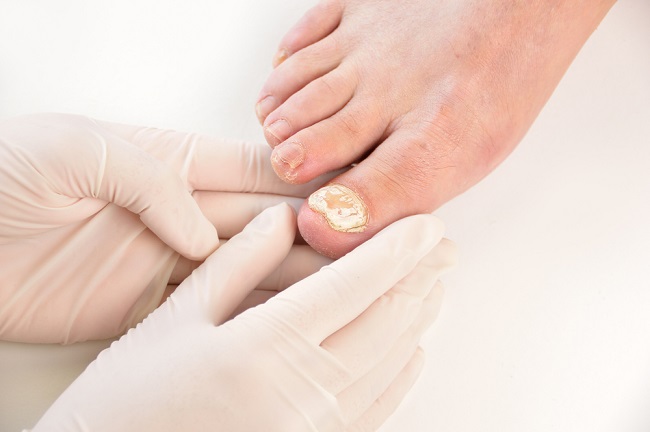Sparfloxacin is an antibiotic drug to treat diseases caused by bacterial infections, such as pneumonia and bronchitis. This drug should not be used carelessly and should only be used according to a doctor's prescription.
Sparfloxacin belongs to the quinolone class of antibiotics. This drug works by inhibiting DNA gyrase which plays an important role in bacterial replication. That way, bacterial growth can be inhibited and bacterial infections can be overcome. Keep in mind that this medicine cannot cure diseases caused by viral infections, such as colds and flu.

Trademarks of sparfloxacin: Newspar
What is Sparfloxacin
| group | Prescription drugs |
| Category | Quinolone |
| Benefit | Treating pneumonia and bronchitis |
| Used by | Adults and children |
| Sparfloxacin for pregnant and lactating women | Category C: Animal studies have shown adverse effects on the fetus, but there are no controlled studies in pregnant women. Drugs should only be used if the expected benefit outweighs the risk to the fetus. Sparfloxacin can be absorbed into breast milk. If you are breastfeeding, do not use this medicine without consulting your doctor first. |
| Shape | Tablet |
Warnings Before Taking Sparfloxacin
Sparfloxacin should not be used carelessly. Some things to consider before taking sparfloxacin are:
- Do not take sparfloxacin if you are allergic to this drug. Tell your doctor about any allergies you have.
- Tell your doctor if you have or are currently suffering from seizures, epilepsy, diseases of the brain and nervous system, kidney problems, or arrhythmias and heart disease that can trigger heart rhythm disturbances.
- Tell your doctor if you are taking any other medicines, including herbal remedies or supplements.
- Do not drive or operate equipment that requires alertness, while you are taking sparfloxacin, as this medicine may cause dizziness and drowsiness.
- Tell your doctor if you are pregnant, breastfeeding, or planning a pregnancy.
- Avoid direct sun exposure while taking sparfloxacin, as this medication can increase skin sensitivity to sunlight.
- See your doctor right away if you have an allergic drug reaction, serious side effect, or overdose after taking sparfloxacin.
Dosage and Instructions for Use of Sparfloxacin
The dose of sparfloxacin varies in each patient. The following is the dose of sparfloxacin based on the patient's condition:
- Condition: Treatment of bronchitis or pneumonia
Mature: The initial dose is 400 mg, followed by 200 mg once daily, for 10 days.
- Condition: Leprosy treatment
Mature: 200 mg once. The duration of treatment can be up to 1 year, depending on the patient's response to therapy.
Dosage for children will be determined directly by the doctor based on the age and health condition of the patient.
How to Take Sparfloxacin Correctly
Follow the doctor's recommendations and read the instructions for use on the packaging before using sparfloxacin. Do not increase, decrease, or stop taking this medication indiscriminately without consulting your doctor.
Sparfloxacin can be taken before or after meals. Use plain water to swallow the tablet. If you forget to take sparfloxacin, take it as soon as you remember. If it is near the time of your next dose, skip the missed dose and continue your regular dosing schedule. Do not double the dose of sparfloxacin to make up for a missed dose.
If you are taking antacids that contain magnesium or aluminum, or vitamins that contain iron, take them 4 hours after you take sparfloxacin.
Store sparfloxacin at room temperature. Protect this medication from exposure to direct sunlight. Keep this medicine out of reach of children.
Interaction of Sparfloxacin with Other Drugs
The following are some of the effects of interactions that may occur if you use sparfloxacin together with other medicines:
- Increased plasma concentration of theophylline or tizanidine
- Decreased effectiveness of sparfloxacin when used concomitantly with antacids
- Increased risk of seizures when used with NSAIDs, such as ibuprofen, aspirin, or naproxen
- Increased effectiveness of warfarin or glibenclamide
- Increased risk of tendon tears when used with corticosteroids
- Increased risk of QT prolongation when used with class Ia and III antiarrhythmic drugs, such as amiodarone and quinidine
Sparfloxacin Side Effects and Dangers
Some side effects that may occur after using sparfloxacin are:
- Headache or dizziness
- Diarrhea
- Nausea or vomiting
- Stomach pain
- Drowsiness
- Hard to sleep
- Ears ringing
Check with a doctor if the complaints mentioned above do not go away or get worse. Call your doctor right away if you have an allergic reaction to your medication or experience more serious side effects, such as:
- Heart rhythm disturbances
- Chest pain and difficulty breathing
- Confusion or hallucinations
- Severe diarrhea
- Tremors or seizures









